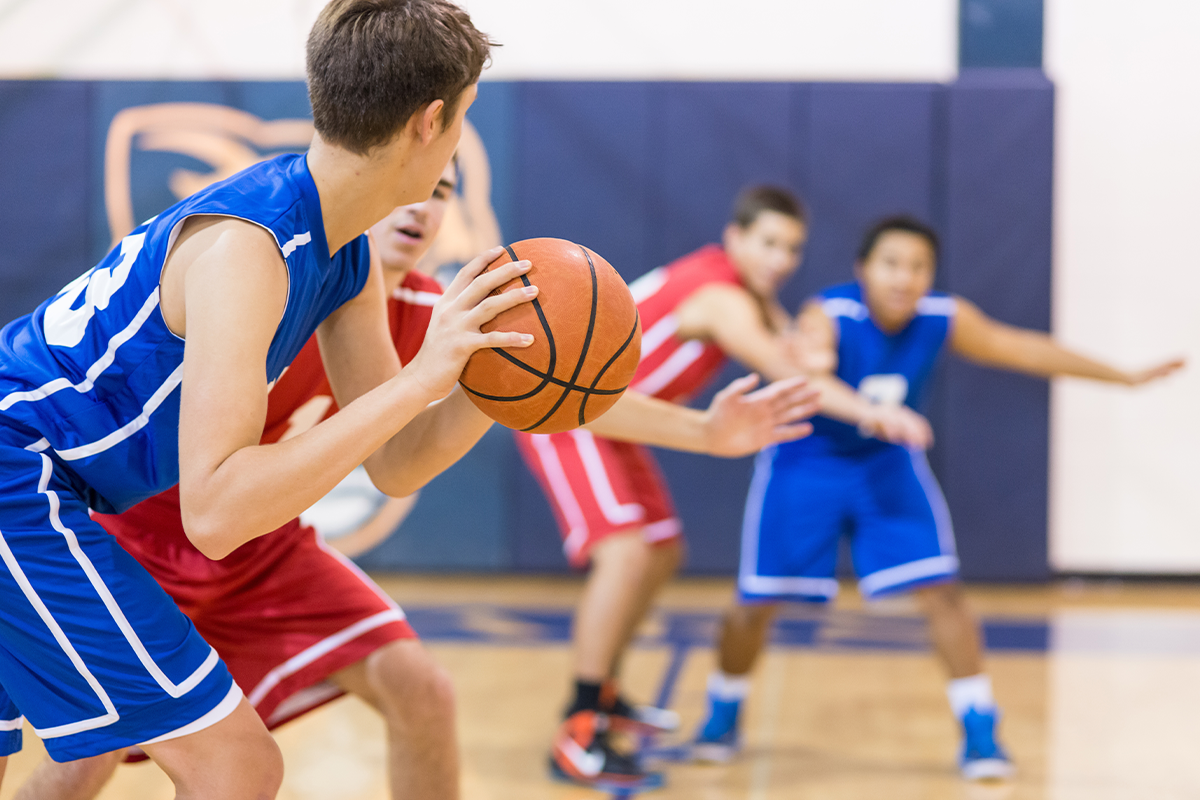More attention is being paid to the positive impacts sports can have on young peoples’ mental health, but children are playing team sports less frequently, according to State of Play 2023, the annual report on trends in youth sports by Aspen Institute’s Project Play.
From 2019 to 2022, the percentage of 6- to 17-year-olds who regularly participated in team sports declined 6 percent (landing at 37.4 percent in 2022) and total participation, youth playing a sport at least once in the past year, remained stagnant at 61 percent.
“If this trend continues with core [participation] going down over time, that would be bad,” Tom Cove, Sports & Fitness Industry Association president and CEO, said in the report. “But we really believe it’s way too early to make any kind of judgment like that. We’ve never had greater awareness at the child and parent level of the benefits of being physically active and playing youth sports. That’s an outcome of COVID.”
The rate of youth ages 6-12 casually trying sports did increase during the period from 60.6 percent to 62.6 percent, and, overall, “kids are trying sports about as much as they did before COVID-19. They’re just not playing as frequently,” the report found.
The report also found that though boys regularly play sports at a higher rate than girls (40 percent vs. 30 percent), participation amongst girls is increasing while boys’ participation is declining.
In California, the percentage of young people ages 6-17 who played on a team or took lessons in 2020–21 (the most recent data available) was 49.4 percent. The federal government established a national goal of 63 percent youth sports participation by 2030.
Mental health
Drawing on a survey conducted by the Aspen Institute in Washington where active children reported more excitement, happiness and motivation and inactive youth reported greater nervousness, anxiety, worry and depression, the report noted that interest in the benefits of sports participation for young people is growing.
According to the survey, which had more than 3,000 respondents in Pierce County, “25 percent of youth who said they had zero days of physical activity reported feeling depressed or hopeless nearly every day, more than twice the rate (11 percent) of those who reported being active every day. The results also suggested that youth who play an organized sport or physical activity have better mental health, although the differences were minimal compared to doing any form of physical activity.”
In summarizing the results, experts recommended that the community “use sports and recreation to help address the mental health crisis, such as coach training, aligning sports and recreation with existing local mental health efforts, and creating public awareness about mental health in youth sports. Many youths surveyed in Pierce County anecdotally described tremendous value to their mental health when playing sports and continued struggles when they can’t play, such as being cut from teams.”
Access
More than half of American adults are in agreeance that youth sports deserve public funding and more than four in five adults saying sports should be more accessible to underserved communities and athletes with physical disabilities, according to data cited in the report.
Forty-nine percent of adults have struggled to afford fees, equipment, uniforms or other costs associated with paying for youth sports, according to the report — highlighting a potential barrier to access. However, there are some promising initiatives taking place, including investments from philanthropists and the government.
“Efforts to provide greater access to low-income children may be working,” the report states. “Youth ages 6-12 from the lowest-income households increased regular sports participation for the fourth straight year. However, the rate declined for the fourth straight year among the highest-income youth. The gap remains significant — 25 percent participation for kids in homes earning under $25,000 vs. 39 percent among those earning $100,000 or more.”
In Oakland, Stephen and Ayesha Curry’s Eat. Learn. Play. Foundation has committed to raising $50 million by 2026 to transform schoolyards and advance school sports at the elementary and middle school levels.
In 2023, members of Congress reintroduced the bipartisan PLAYS in Youth Sports Act, which would create a $75 million grant program aimed at improving the health of youth and supporting the positive development of youth via sports participation.
Staffing
According to the report, it is getting more difficult to find coaches at all levels. This is partially due to the fact that most coaching jobs are volunteer positions and there is a drop in volunteerism across sectors in the U.S. It is also because programs that do pay coaches are experiencing new challenges.
“In California, the largest state in the country for youth sports, leaders of club sport programs worry that their industry will get swept up in legal efforts by unions and other parties to treat Uber and Lyft drivers as employees rather than independent contractors. Many club coaches are contractors,” the report notes. “Depending on how these efforts evolve, youth programs could be required to reclassify independent contractors as employees. The Los Angeles Breakers FC youth soccer club is being sued over claims that it misclassifies coaches as contractors to avoid paying overtime. If coaches are deemed employees, some club leaders warn that they may have to raise participation fees and have less ability to waive fees for lower-income youth.”
Having to deal with parents’ behavior is another contributing factor.
Additionally, the report found that fewer coaches are trained in key competencies like concussion management, general safety, physical conditioning, sports skills and tactics and effective motivational techniques following the pandemic. At the same time, it was concluded that training coaches on aspects of mental health and well-being is emerging as a priority.
Read the full report, which includes sections on participation, health, coaching and cost trends, here.





